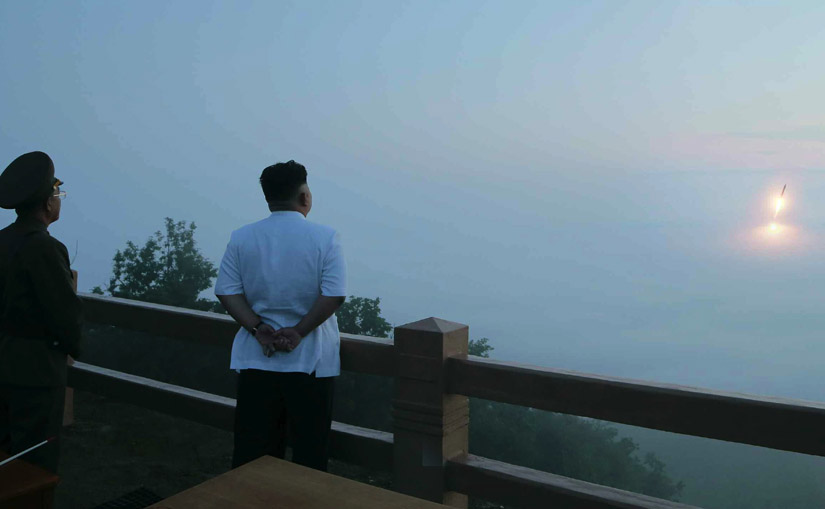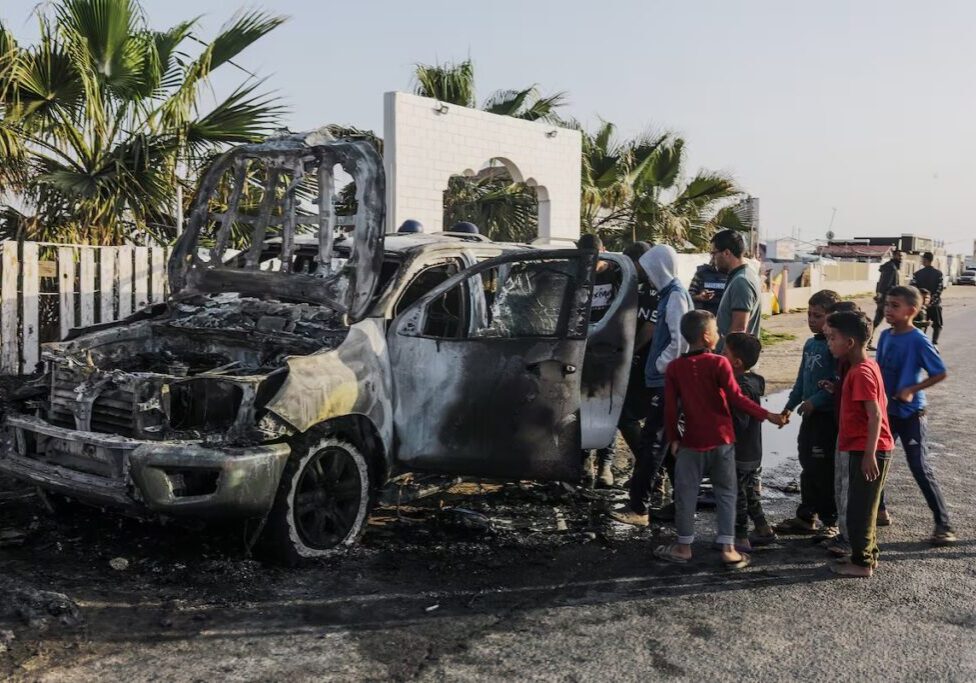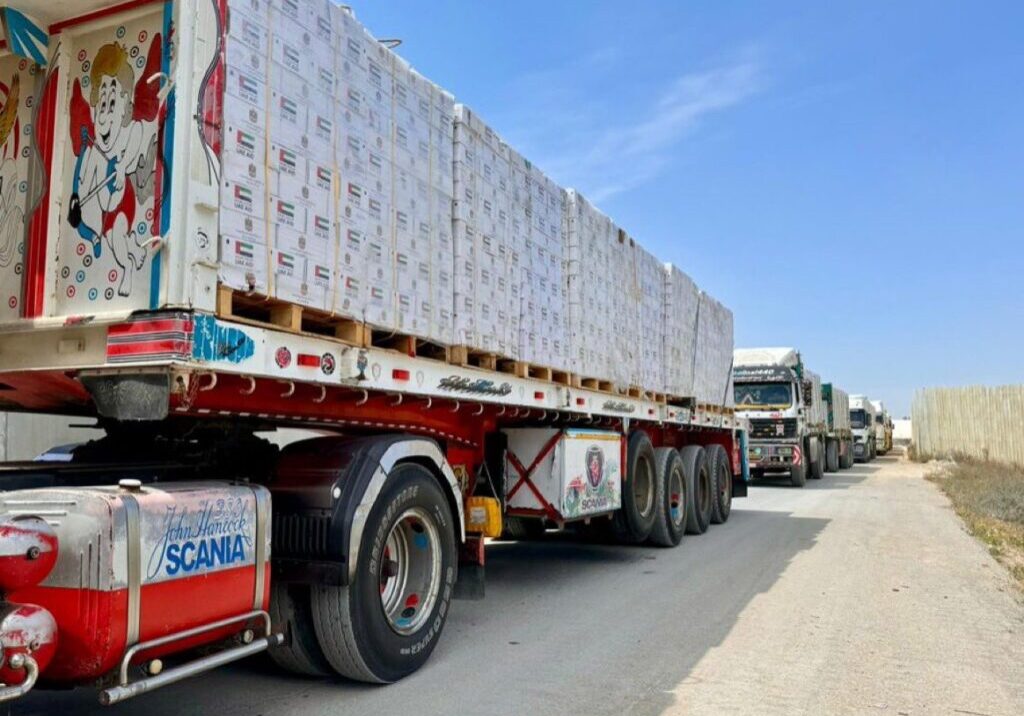Australia/Israel Review
Iran and the North Korea Precedent
Apr 1, 2015 | Dan Blumenthal and Edward Linczer

How a bad deal on Iran might affect East Asia
In his March 3 address to the US Congress, Israeli Prime Minister Binyamin Netanyahu rightly compared the ongoing nuclear negotiations with Iran to Washington’s past experience with North Korea. But the Obama Administration appears to be willfully ignoring the record with North Korea. It also seems unfocused on the dire implications for Asia of a bad Iran deal.
What should the North Korea experience have taught us? The short answer is that the US began negotiating with Pyongyang 21 years ago and today North Korea has approximately 16 nuclear weapons and is on a pathway toward more.
A longer answer requires a review of the North Korea negotiating record. The first North Korean nuclear “deal” was the 1994 Agreed Framework in which Pyongyang pledged to dismantle its plutonium processing plant at Yongbyon in exchange for international assistance in building two civilian nuclear reactors. By 2002, it was clear to Washington that North Korea had abrogated its promises of a nuclear freeze. The US confronted the Kim regime about its secret construction of a uranium enrichment facility in October 2002. Kim Jong-il’s response was to ratchet up the pressure. North Korea withdrew from the Non-Proliferation Treaty (NPT) in January 2003 and reactivated the Yongbyon facility.
President Bush convened the “Six Party Talks”, which included the US, China, Russia, South Korea, North Korea and Japan, seemingly convinced by Henry Kissinger’s belief that with Beijing and Washington working together, North Korea would abandon its nukes. The next deal was offered to Kim in 2004: dismantle the nuclear program in return for economic aid and entry into the international community. North Korea refused the deal, hoping to wait out a “hostile” Bush facing uncertain re-election prospects. But the precedent had been set: ten years after the first deal, North Korea was offered more inducements to comply with its original promises, even after cheating and developing a second nuclear facility.
During the second Bush term, the US was in a strong position to get what it wanted from North Korea. Pyongyang’s prime benefactor, China, was scared. After the invasion of Iraq, Beijing believed that President Bush and Vice President Cheney were committed to removing regimes in pursuit of weapons of mass destruction (WMD). Beijing was also nervous that Japan’s hawkish then-Prime Minister Junichiro Koizumi would consider lifting the ban on Japan’s own nuclear program.
America’s North Korea policy was on solid ground. The Bush Administration coerced and pressured Pyongyang even as it kept open the opportunity for diplomacy. It went after Kim’s personal wealth, sanctioning his assets at the Banco Delta Asia in Macau, and rolling up his international criminal networks, upon which the regime relies for its very survival. North Korea was desperate.
By 2005, North Korea said it would dismantle its nuclear weapons program and return to the NPT/IAEA regime. In exchange, the Six-Party members agreed to provide energy assistance and respect North Korea’s right to a civilian nuclear program.
But Kim wanted more. In 2006, he test-launched a Taepodong-2 IRBM, and conducted a nuclear weapons test, correctly predicting that his negotiating partners would placate him in return.
In February 2007, the Six Parties reached a two-part agreement. In the first 60 days, North Korea would freeze its nuclear activities; the second phase stipulated that North Korea would disable all nuclear facilities. But there was no deadline for phase two. Washington simply gave away its leverage, lifting the most painful Banco Delta Asia sanctions in return for more empty promises.
Not too long afterwards, North Korea received yet another gift, when Bush removed North Korea from the US list of state sponsors of terrorism in exchange for the Kim regime agreeing for a third time to disable its plutonium enrichment facility in Yongbyon. While North Korea made a big show of destroying a symbolic tower at Yongbyon, we now know that the Kim regime had no intention of stopping either its drive toward nuclear weapons or the proliferation of its WMD technology. In 2007, the Israeli air force bombed a nuclear reactor in Syria that was built by North Korea. In 2009 and 2013, North Korea carried out its second and third nuclear weapons tests. Pyongyang is now suspected of having multiple uranium and plutonium enrichment sites; the US Defence Intelligence Agency has stated that it is “moderately confident” that North Korea is capable of mounting nuclear warheads on missiles.
Twenty-one years of negotiating with North Korea and offering one-sided concessions has been a complete failure. The lesson for rogues pursuing nukes is that there is no end to US goodwill: no redlines will be upheld, and no costs to be paid if promises are broken. North Korea talked and talked, promised and promised, and cheated and cheated. In return it received fuel, aid and trade that bailed out its failing economy. It sold nuclear technology to Syria without the US exacting a price. It has killed South Korean soldiers, sailors and civilians with impunity.
Why wouldn’t Iran follow this very productive pattern of rogue statecraft? Indeed, Teheran is starting from a better negotiating position: While the US demanded the complete destruction of North Korean nuclear infrastructure, Iran will be allowed to keep important parts of its own program. Proponents of the Iran deal will argue that Iran is different, it is still part of the NPT. But North Korea agreed to rejoin the NPT even though the US policy was complete abandonment of its nuclear infrastructure. Why did the US demand more of North Korea than arguably the more dangerous Iran? Iran already appears to be wearing out the US. The Obama Administration tacitly acknowledged Iran’s “right” to enrich in the interim nuclear deal. And the US goals have shifted from denying Iran nuclear weapons capability to extending the time it will take for Iran to “breakout” to a nuclear weapon.
Just as it did with North Korea, the US is throwing Iran a lifeline when Teheran is on its heels thanks to tough sanctions and military pressures. As with North Korea, there is every reason to expect Iran to lie and cheat, building more nuclear capacity while it “negotiates” with Washington. Even the arguments for a deal are eerily similar to those marshalled for a deal with North Korea. Here are some familiar nuggets: “it’s either talk or war” and “talking in and of itself slows Iran’s nuclear program.”
Much has been said and written about the implications of an Iran deal for the Middle East, but the implications for Asia are equally troubling. First, there is South Korea. The US forbids the democratic and peaceful South from enriching uranium. After Iran is permitted the “right” to do so, Seoul will either demand to the same, or simply do it: A majority of South Koreans already support the development of a domestic nuclear deterrent and the Iran deal will show South Korea once again that nuclear rules do not apply to rogue states.
Japan already possesses the capability to develop nuclear weapons in a matter of months. After watching the US fail to stop Pyongyang from acquiring nuclear weapons, and after facing a nuclear China’s coercion for a decade, a homegrown deterrent looks more attractive. Tokyo has already watched in horror as President Obama did nothing after Bashar al-Assad crossed the Administration’s chemical weapons “redline.” Tokyo relies upon the US to protect it against WMD. It is watching yet another country that was supposedly not permitted to get a nuclear weapon find a path toward just that. While the nuclear taboo remains strong in Japan, it may not be strong enough to resist this set of pressures. If Japan develops nuclear weapons, China will almost surely increase its arsenal. India will also respond in kind. All of the sudden, a very promising 21st century Asia will look a lot more like pre-World War I Europe – only with nuclear weapons.
The North Korea lesson is that the only good deal is one in which a rogue regime decides to entirely give up its nuclear weapons, before Washington gives up anything. The United States is under no pressure to conclude a deal with Iran, just as its hurry to conclude one with North Korea was manufactured by US negotiators. The mullahs are on the ropes, as was the Kim family.
For Washington, getting a good deal means forcing a rogue regime to make the strategic decision that having nuclear weapons is worse than giving them up. Only Washington can lead in making the risks of holding onto nuclear weapons worse than the risks of abandoning them. Bush’s short-lived coercive diplomacy on North Korea was a good model. The Kim family did not think it could survive the comprehensive pressures visited upon it and was likely shocked that the President let them off the hook. Before lifting sanctions and pressure, President Obama should take another look at his many coercive options. The policy should be coercion until Iran completely dismantles its nuclear infrastructure. It would be a tragic irony for a president who came to office committed to reducing nuclear weapons to preside over a global nuclear breakout.
Dan Blumenthal is Director of Asian studies at the American Enterprise Institute. Edward Linczer is a research assistant in Asian studies at the American Enterprise Institute. © Weekly Standard, reprinted by permission, all rights reserved.
Tags: Asia, Iran, North Korea






